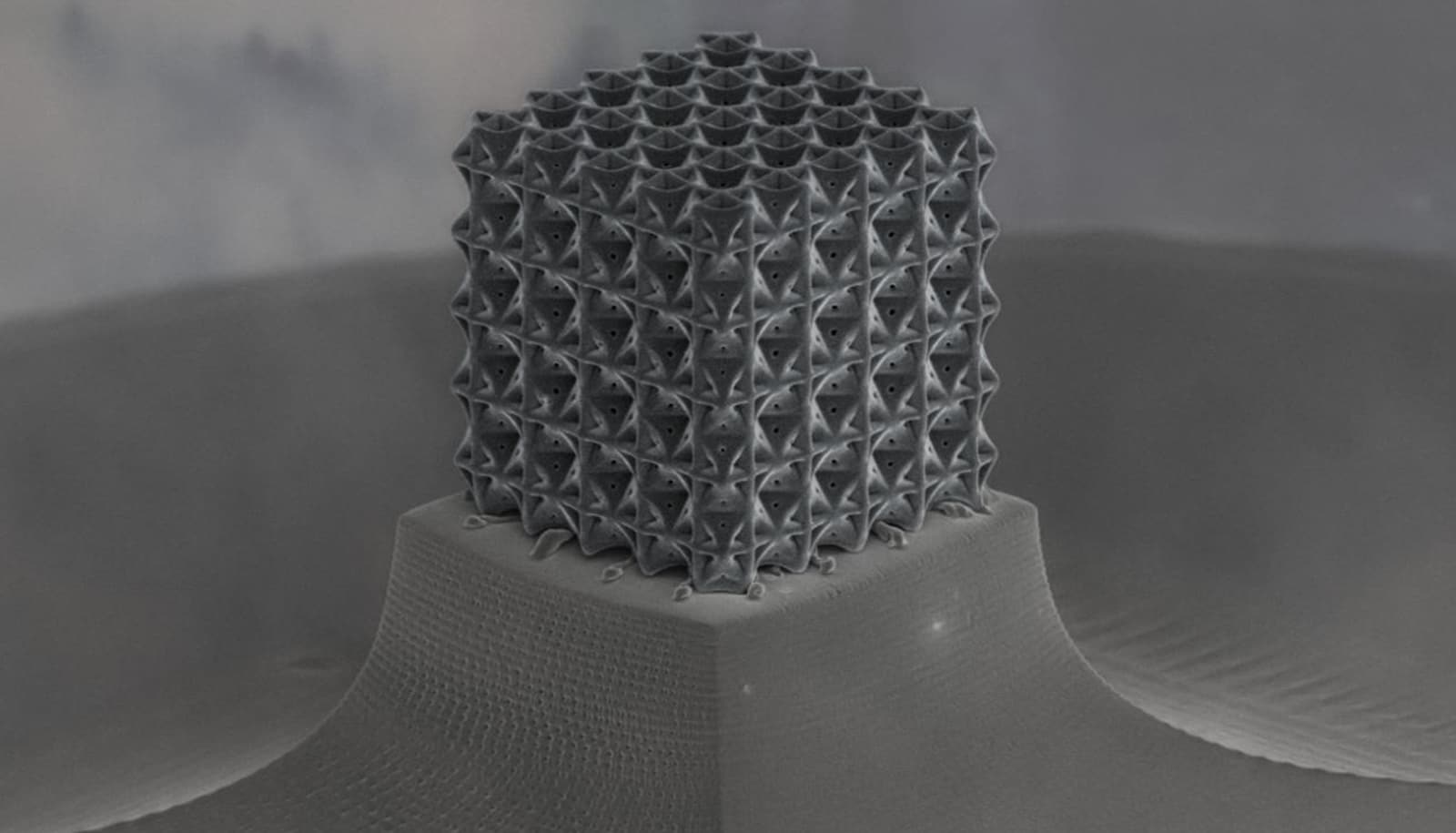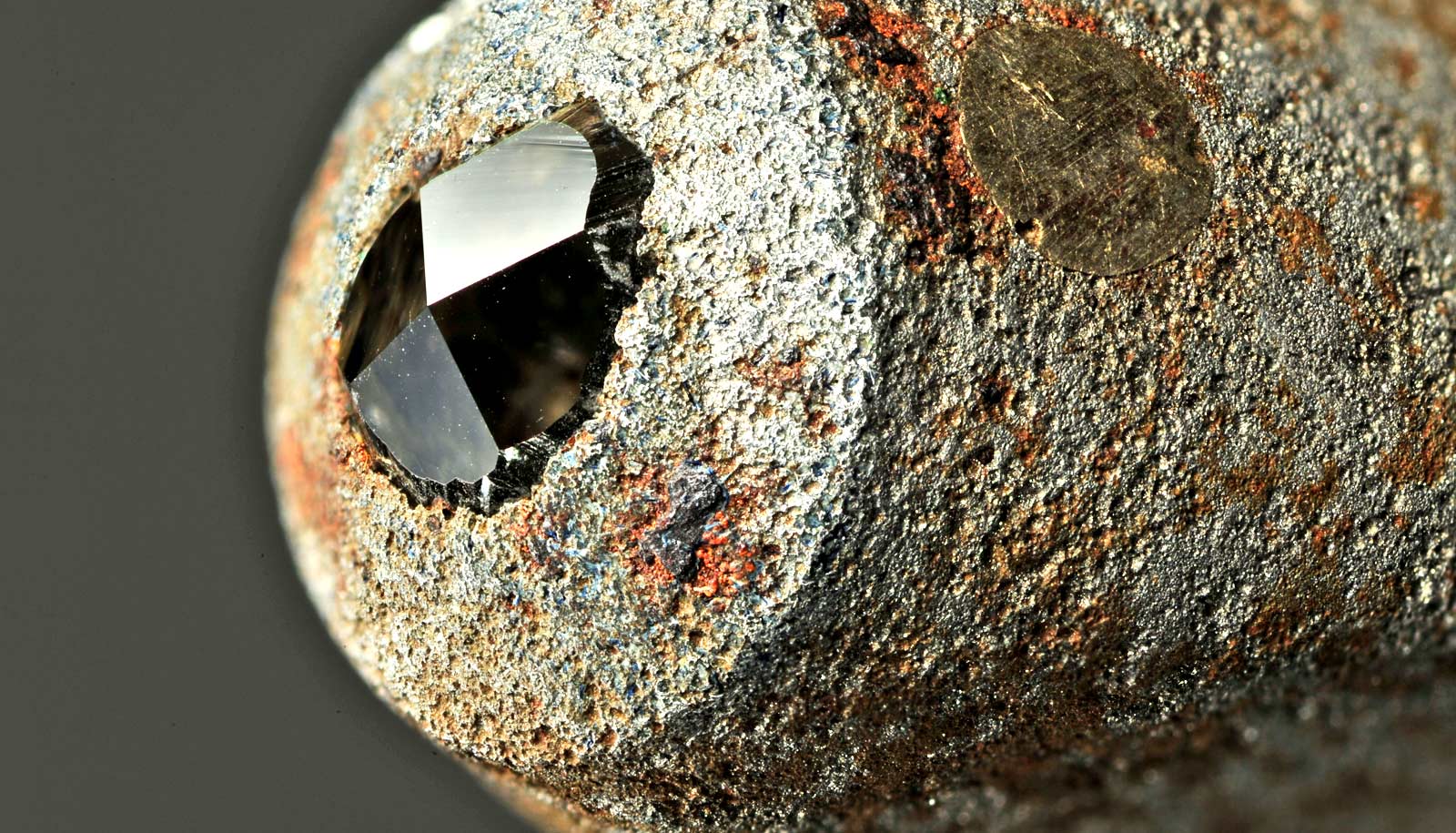Researchers have created the first model of carbon structures that may make up planets outside the solar system by measuring carbon at the highest pressures ever achieved in a laboratory.
Carbon is one of the most prevalent elements in existence. As the fourth most abundant element in the universe, it’s a building block for all known life and forms the interior of carbon-rich exoplanets.
“This is the highest pressure any atomic structure has been measured…”
Decades of research has shown that carbon’s crystal structure has a significant impact on a material’s properties. In addition to graphite and diamond—the most common carbon structures found at ambient pressures—scientists have predicted that there are several new structures of carbon that could be found at pressures above 1,000 gigapascals (GPa).
The pressures, which are approximately 2.5 times the pressure in Earth’s core, are important for studying and modeling the interiors of exoplanets. However, it has historically been difficult to achieve such pressures in a laboratory setting and impossible to determine the structure of matter under those pressures.
That is, until now.
Researchers have successfully measured carbon at pressures reaching 2,000 GPa (five times the pressure in Earth’s core), nearly doubling the maximum pressure at which carbon’s crystal structure has ever been directly probed. Their results appear in the journal Nature.
“This is the highest pressure any atomic structure has been measured, placing key constraints on the equation of state, material strength, melting, and chemical bonding of carbon,” says Gilbert (Rip) Collins, a professor of mechanical engineering and associate director of science, technology, and academics at the University of Rochester’s Laboratory for Laser Energetics (LLE).
“The diamond phase of carbon appears to be the most stubborn structure ever explored.”
“In our studies of the many recently discovered and yet-to-be discovered massive, carbon-rich planets, we will have to consider the diamond structure of carbon at pressures well beyond its predicted stability range.”
The researchers compressed solid carbon to 2,000 GPa using ramp-shaped laser pulses, simultaneously measuring the crystal structure using an X-ray diffraction platform to capture a nanosecond-duration snapshot of the atomic lattice. The experiments nearly double the record high pressure at which X-ray diffraction has been recorded on any material.
The researchers found that even when subjected to the intense conditions, solid carbon retains its diamond structure, far beyond its range of predicted stability. The findings indicate that the strength of the molecular bonds in diamond persists even under enormous pressure, resulting in large energy barriers that hinder carbon’s conversion to other possible structures.
“The diamond phase of carbon appears to be the most stubborn structure ever explored,” says Ryan Rygg, an assistant professor of mechanical engineering and of physics and a senior scientist at the LLE.
“This could have implications for carbon in the deep interiors of planets, where the precipitation of diamond is expected. Now we anticipate the diamond structure of carbon will persist over a much greater range of planetary conditions than we previously thought.”
Additional researchers from Lawrence Livermore National Laboratory (LLNL) and the University of Oxford contributed to the work.
Source: University of Rochester



